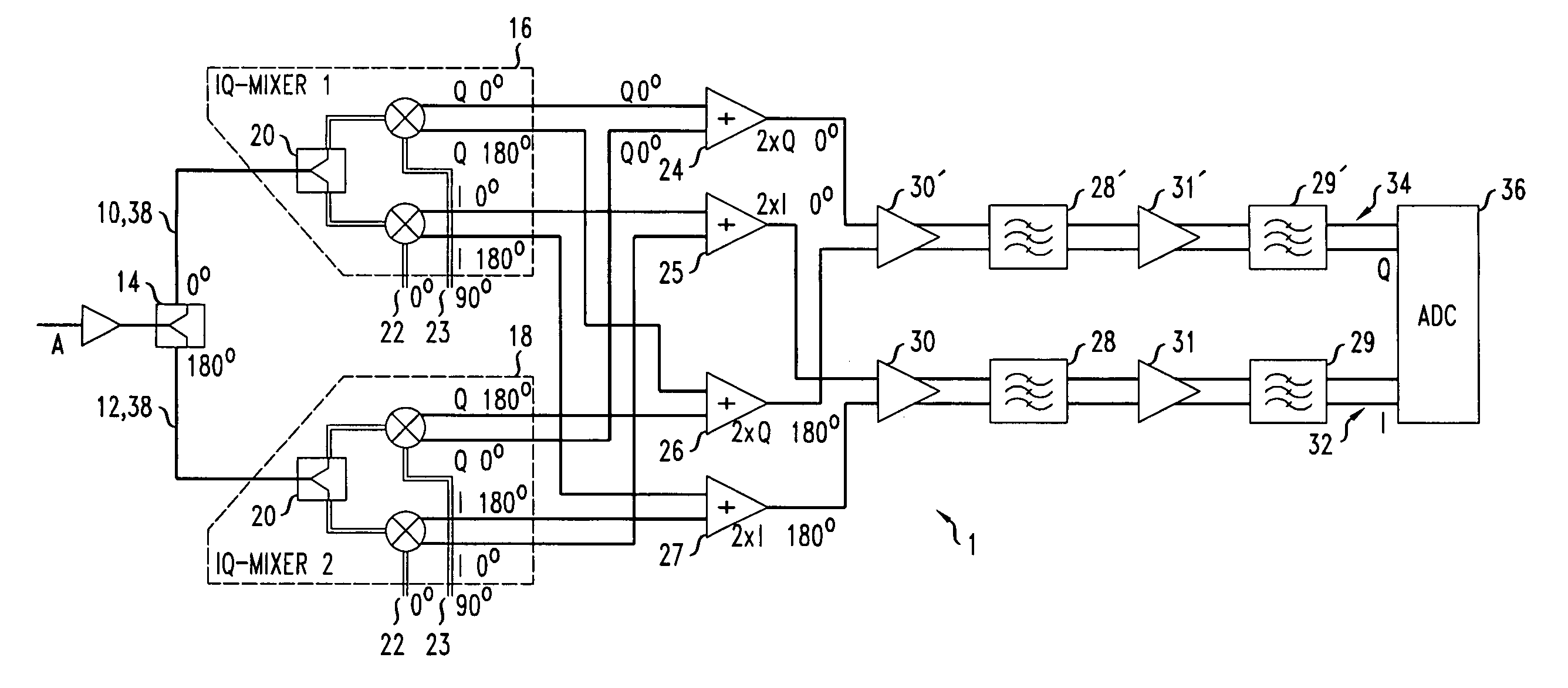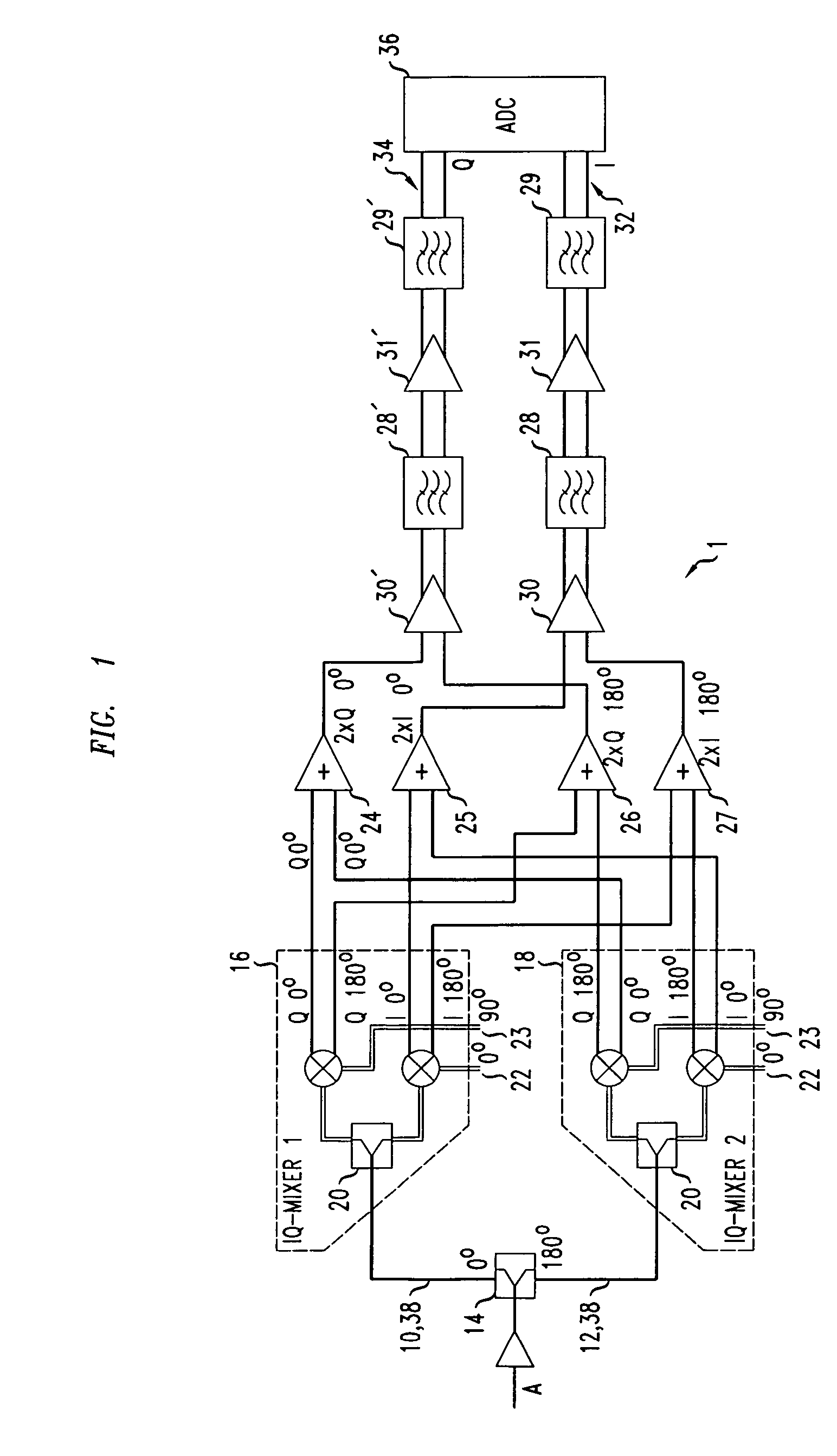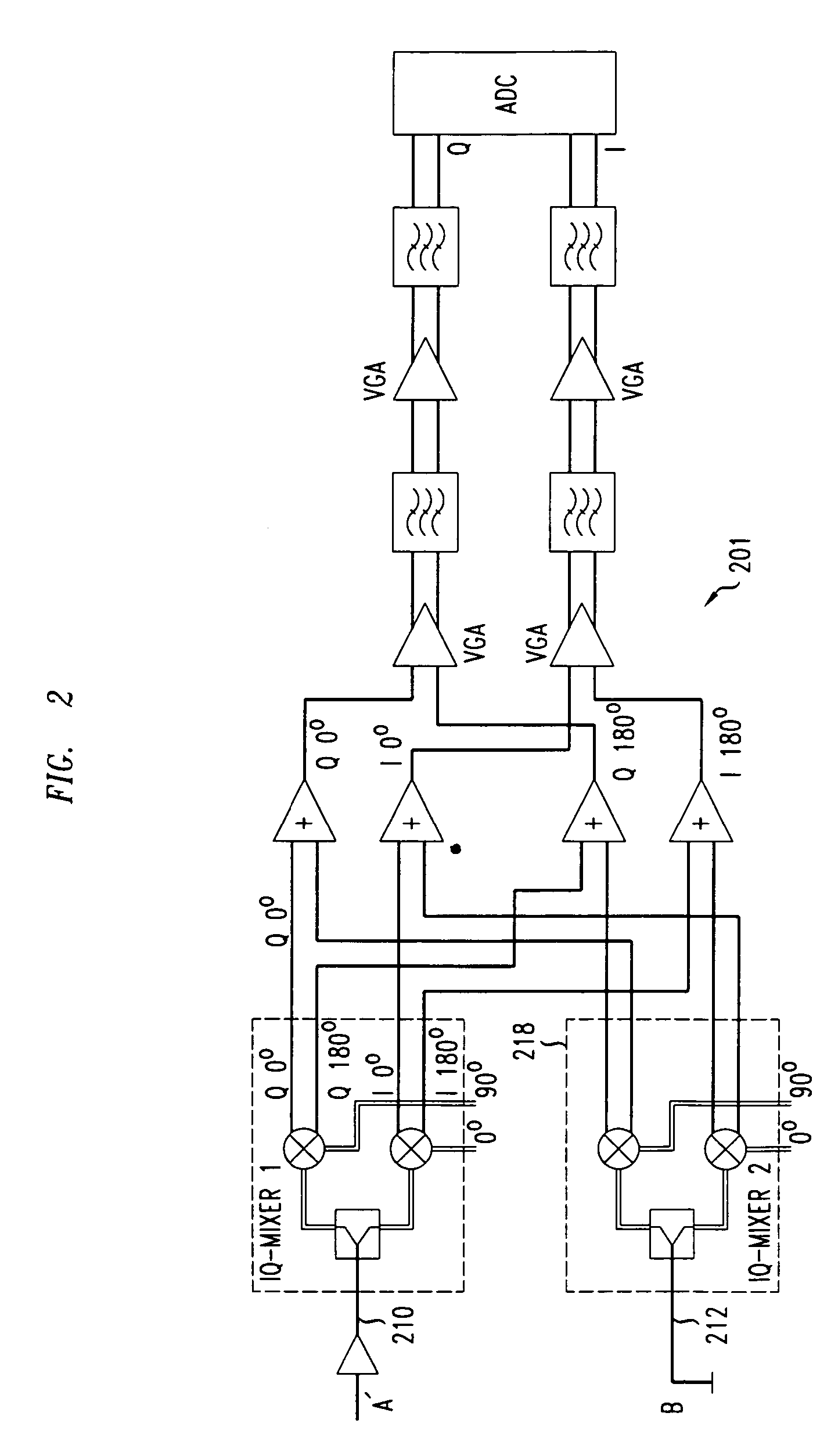Telecommunications receiver and a transmitter
a receiver and transmitter technology, applied in the field of telecommunications receivers and telecommunications transmitters, can solve problems such as canceling error components of output signals, and achieve the effect of improving carrier suppression
- Summary
- Abstract
- Description
- Claims
- Application Information
AI Technical Summary
Benefits of technology
Problems solved by technology
Method used
Image
Examples
embodiment 1
[0020]In a first receiver embodiment 1 as shown in FIG. 1, the input signal A is amplified by an amplifier DRV and split into two paths 10,12, a path 10 with no phase shift and a path 12 with a phase shift of 180 degrees. One way to achieve the phase shift is to use a 180° Hybrid 14, to ensure that the signal levels are the same for both paths 10,12.
[0021]Signals on each of the paths 10,12 are then processed by a respective IQ mixer 16,18, each of which uses two LO-signals, one 22 with 0° phase shift and one 23 with 90° phase shift. The IQ-mixers 16,18 for both paths 10,12 are identical in structure. Each mixer 16,18 incorporates a splitter 20 and signal inputs 22,23 from a local oscillator (LO, not shown). Both IQ-mixers are implemented on the same integrated circuit chip. The length of the connectors 38 from the 180° Hybrid 14 to each splitter 20 is the same.
[0022]Due to imperfections of the IQ-mixers 16,18 an unwanted DC offset appears at the outputs of the IQ-mixers 16,18. Each ...
embodiment 201
[0027]A second receiver embodiment 201 is shown in FIG. 2. This receiver has essentially the same structure and function as the receiver shown in FIG. 1 except that the input signal A′ is directed to one path 210 (so there is no 180° Hybrid). A reference signal B which is zero is provided instead to the other path 212 so that the second IQ-mixer 218 is used to generate a reference DC offset which is then used for cancellation purposes as in the receiver in FIG. 1. As cancellation of effects which are dependent of the input signal level are not taken into account, the performance of this embodiment may be lower than the receiver in FIG. 1.
Other Receivers
[0028]A third receiver 301 is shown in FIG. 3. In this receiver, the I and Q signals from each IQ-mixer 316, 318 are provided as unbalanced signals to the differential variable gain amplifiers 330. Specifically, the 0° phase I component from IQ-mixer 316 and the 180° phase I component from IQ-mixer 318 are passed through a respective ...
PUM
 Login to View More
Login to View More Abstract
Description
Claims
Application Information
 Login to View More
Login to View More - R&D
- Intellectual Property
- Life Sciences
- Materials
- Tech Scout
- Unparalleled Data Quality
- Higher Quality Content
- 60% Fewer Hallucinations
Browse by: Latest US Patents, China's latest patents, Technical Efficacy Thesaurus, Application Domain, Technology Topic, Popular Technical Reports.
© 2025 PatSnap. All rights reserved.Legal|Privacy policy|Modern Slavery Act Transparency Statement|Sitemap|About US| Contact US: help@patsnap.com



